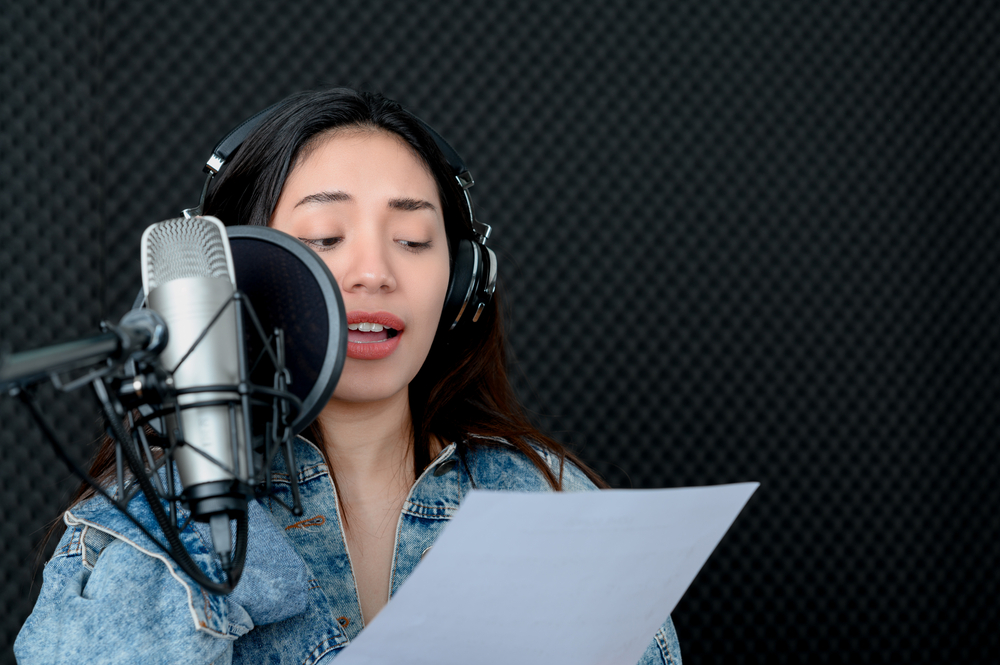Broadcasting Equipment and the Power of Voiceovers
Once upon a time, voiceovers were primarily associated with radio and TV commercials. However, in today’s era, they have expanded to other mediums, like podcasts, video game narration, e-learning modules, and even virtual reality experiences. The magic of voiceovers lies in their ability to captivate audiences, enhance storytelling, and evoke emotions that bring content to life.
Specialized radio broadcast equipment and tools are essential to create sound voiceovers. This blog post will delve into the broadcasting equipment required to produce voiceovers. From microphones to treatment, we will uncover the elements that contribute to the success of these audio wonders.
A Top-Notch Microphone: Vital for Crystal Sound
The most crucial piece of equipment for voiceovers is a high-quality microphone. Look for a microphone specifically designed for recording vocals. These types of microphones capture every nuance and subtlety in your voice with precision compared to dynamic microphones.
The market offers options catering to budgets. Industry veterans worldwide rely on professional-grade microphones due to their quality and reliability. They offer value without compromising much on sound quality. Additionally, consider microphones with features such as a cardioid polar pattern, which helps isolate your voice from background noise, and a low self-noise level for cleaner recordings. Investing in a top-notch pop filter and shock mount can further enhance the overall recording experience, ensuring that your voiceovers are consistently crystal clear and professional.
Soundproofing & Acoustic Treatment: Creating an Ideal Recording Environment
Creating the recording environment involves minimizing background noise and echoes that can affect your audio. Investing in soundproofing materials, like foam panels or bass traps, can make a difference by reducing unwanted reflections and reverberations.
It’s highly recommended to set up a workspace for voiceover recording in a room with minimal hard surfaces like glass or concrete that can cause echoes. Placing pillows, blankets, and rugs in corners and on walls can help reduce noise reflections.
Preamp & Audio Interface: Boosting Signal Quality
Now that we’ve covered the microphone and recording environment, let’s talk about how to amplify your voice. This is where preamps and audio interfaces come into play. An audio interface serves as a connection between your microphone and computer, ensuring that the analog signal from the mic is converted into a format for editing.
Many studio-grade microphones require a preamp to ensure sound quality and sufficient gain. While some microphones have preamps built in, the focus should be on the gain without introducing hiss or distortion.
Digital Audio Workstation (DAW): The Heart of Your Recording
Once you have set up your hardware, it’s time to consolidate all your recordings using a Digital Audio Workstation (DAW). A DAW is software that allows you to record, edit, mix, and master files. There are options in the market catering to different budgets and skill levels. Beginners might find numerous beginner’s software for their needs, while professionals may prefer numerous advanced DAWs.
Choose a DAW that aligns with your workflow preferences and offers editing capabilities like cutting, trimming, fading in/out equalization adjustments, compression controls, and noise reduction tools.
Headphones: Ensuring Accurate Monitoring
To ensure monitoring during recording sessions for high-quality voiceovers, it is crucial to invest in a pair of studio headphones. These headphones will allow you to pay attention to details while recording or mixing/editing audio material later.
It’s important to find headphones that have a frequency response across ranges when looking for headphones. This will help you pick up on any irregularities or potential issues in the sound. Many people prefer closed-back headphones because they can block out noise and prevent audio from leaking out during studio sessions.
To sum it up, creating voiceovers requires broadcasting equipment that guarantees clear, professional, and captivating audio experiences. Choosing the microphone, setting up soundproofing in your recording space using a reliable preamp and audio interface, working with a suitable DAW for editing, and investing in high-quality headphones all play a part in achieving exceptional voiceover quality. With these tools at your disposal, you’ll be able to unlock possibilities and enhance storytelling across various media platforms.

